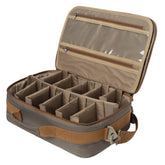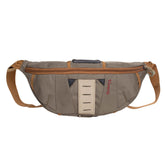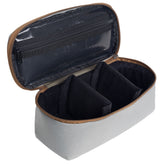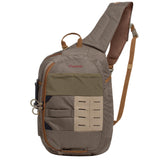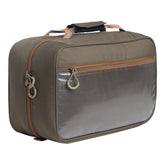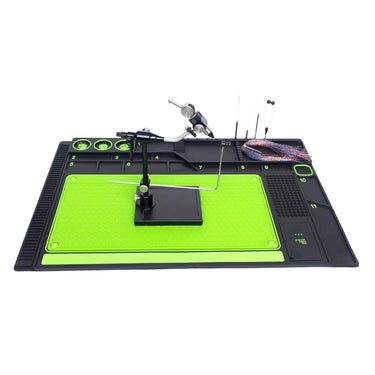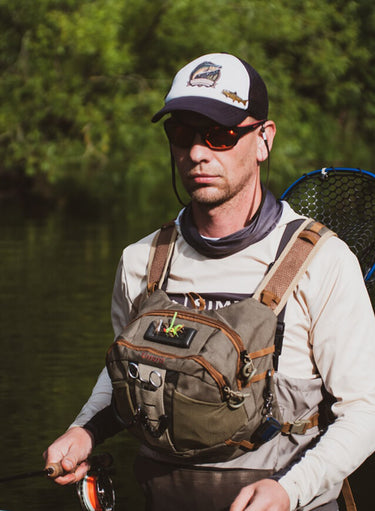Fishing Net: A Comprehensive Guide to Carbon Fiber, Nylon Mesh, Stainless Steel, and Fly Fishing Landing Nets
When it comes to fishing, having the right gear can significantly impact your experience and success. A landing net is essential for both catching and releasing fish, making it a vital tool whether I’m out in saltwater or freshwater. Understanding the different types of landing nets available, such as carbon fiber, nylon mesh, stainless steel, and those designed specifically for fly fishing, can enhance my fishing adventures.

I’ve often found that the choice of landing net affects not just my convenience, but also the well-being of the fish I intend to release. Using the right landing net minimizes harm to the fish, ensuring a higher survival rate after catch and release fishing. For instance, carbon fiber nets are lightweight yet durable, while nylon mesh offers flexibility ideal for delicate species. Additionally, stainless steel options provide sturdiness for larger catches, making them versatile across various fishing environments.
Exploring these different landing nets has opened my eyes to how specific designs cater to different fishing styles. Whether I am fly fishing in a serene river or battling waves in saltwater, knowing which net suits my needs helps me make informed decisions that enhance both my enjoyment and the sustainability of the sport.
Types of Fishing Landing Nets

Fishing landing nets come in various materials and designs, each suited for specific fishing techniques and environments. Selecting the right type can enhance my fishing experience and increase my chances of landing a catch successfully.
Carbon Fiber Fishing Landing Nets
Carbon fiber landing nets are known for their lightweight yet durable construction. This material offers a high strength-to-weight ratio, making it easy to handle and maneuver during fishing trips.
The netting is typically designed to be tangle-free, reducing the time spent retrieving fish. Additionally, the carbon fiber frame is resistant to corrosion and damage from water exposure.
I appreciate the ergonomic handles on many carbon fiber nets, which provide a comfortable grip. These nets are often a preferred choice for anglers looking for performance without added bulk.
Nylon Mesh Fishing Landing Nets
Nylon mesh fishing landing nets are popular due to their versatility and affordability. They are resistant to tearing and can hold up against the weight of larger fish, making them suitable for various fishing styles.
The nylon mesh allows water to flow freely, minimizing drag when lifting fish from the water. This feature is crucial as it helps ensure the fish remain unharmed during the landing process.
I often find these nets available in different sizes and shapes, catering to both freshwater and saltwater fishing. The lightweight design adds to the convenience while fishing and makes storage simple.
Stainless Steel Fishing Landing Nets
Stainless steel landing nets are renowned for their strength and durability. These nets are often heavy-duty, providing a sturdy option for anglers targeting larger species.
Corrosion resistance is a critical feature, as stainless steel can withstand harsh saltwater conditions. The frames are robust, ensuring they won’t easily bend or break during use.
I find that the weight of these nets can be a downside when fishing for extended periods. However, the trade-off for added strength is often worth it, especially for serious anglers who prioritize reliability.
Fly Fishing Landing Nets
Fly fishing landing nets are specifically designed for the unique challenges of fly fishing. These nets usually feature a deeper frame and are equipped with rubberized mesh to protect delicate fish.
The rubber mesh prevents tangling while minimizing harm to the fish's scales and skin. This feature is particularly important for catch-and-release fishing practices.
I prefer a net with a long handle, which simplifies reaching fish in tricky spots. Many fly fishing nets also come with a built-in measuring tape, allowing for precise measurements of my catch without the need for additional tools.
Usage Scenarios and Benefits

I find that different fishing nets serve specific purposes based on the fishing environment and technique. Understanding the unique applications of each type enhances my fishing experience and success rates.
Catch and Release Fishing
For catch and release fishing, a soft nylon mesh landing net is ideal. It reduces stress on fish, minimizing the chance of injury during handling. The net's gentle material helps preserve the fish's protective slime coating, essential for their health.
Using a rubberized net is another excellent choice; it prevents hooks from snagging and allows for easier removal once the fish is back in the water. I prefer nets that have a shallow design, making it easier to cradle fish securely without excessive handling.
Saltwater Fishing Applications
In saltwater conditions, durability is essential. I often opt for carbon fiber or stainless steel nets due to their resistance to corrosion. The lightweight nature of carbon fiber makes it easier to maneuver while fighting larger species like tuna or tarpon.
Stainless steel nets are robust and withstand heavy use. For surfcasting or offshore fishing, a larger size net allows me to manage bigger catches, ensuring I can lift them securely from the water without risk.
Freshwater Fishing Applications
For freshwater fishing, I typically choose a lightweight landing net made from nylon mesh. It easily handles species such as trout or bass, allowing for a smooth catch and release process. The soft material minimizes damage to fish while providing ample support.
When targeting smaller streams or ponds, a compact landing net is useful. It allows for precision and control when landing fish in tight spaces. I sometimes opt for a bamboo frame, which not only looks appealing but is also environmentally friendly.
Fishing Net Maintenance and Care
Proper maintenance of my fishing nets is essential for ensuring their longevity and functionality. Here are some key steps I follow:
-
Rinse After Use
I always rinse my nets with fresh water after every fishing trip. This helps remove salt, dirt, and debris that can cause wear and tear. -
Drying
I make sure to dry my nets completely before storing them. This prevents mold and mildew, especially for nylon and mesh varieties. -
Inspect Regularly
I regularly check for any damages, such as tears or frayed edges. Early detection allows for timely repairs. -
Storage
I store my nets in a cool, dry place. Avoiding direct sunlight and damp areas helps maintain the integrity of the materials. -
Repair Kits
I keep a simple repair kit handy with patches and adhesive for quick fixes. This ensures my nets are always ready for the next outing.
For different types of nets, specific care may vary. For example, carbon fiber landing nets require less maintenance, while nylon mesh landing nets may need more attention due to their susceptibility to wear.
By following these steps, I can extend the life of my fishing nets and enhance my overall fishing experience.
Selecting the Right Fishing Landing Net
Choosing the appropriate fishing landing net is crucial for both enthusiasts and professionals. Factors such as intended use, material, and personal preferences play significant roles in making the best choice for your needs.
Considerations for Fish Farming and Aquaculture
In fish farming and aquaculture, selecting a landing net that minimizes stress on the fish is essential. I prioritize nets with soft mesh materials, such as nylon or rubber, which reduce the risk of injury or fin damage.
Factors to consider include:
- Size: Ensure the net is large enough to accommodate the species raised.
- Mesh type: Opt for fine mesh to prevent smaller fish from escaping.
- Durability: Choose corrosion-resistant materials, especially for use in saltwater environments.
Researching suppliers, like those on platforms such as AliExpress, can provide a range of options tailored for aquaculture settings.
Personal Fishing Tackle Selection
When I select a landing net for personal fishing, I consider my targeted species and fishing technique. For fly fishing, a lightweight net with a longer handle is beneficial for landing fish without excessive movement.
Key considerations include:
- Weight: Lighter nets are easier to handle during long fishing trips.
- Material: Carbon fiber offers strength without adding extra weight, ideal for sensitive fishing situations.
- Handle Length: A longer handle can help me reach fish without wading too deep.
Matching the net size and style to the fishing environment enhances the overall experience, making for a more effective catch.



